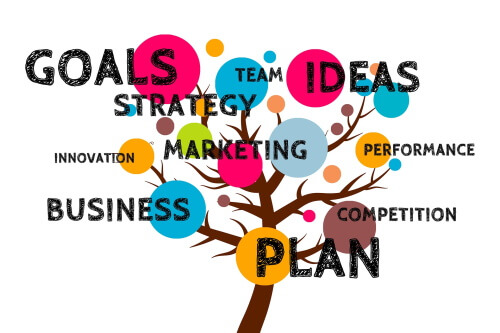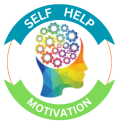Setting goals is an important part of any successful individual or organization, but when it comes to goal setting what are objectives?
Table of Contents

Hi, Ian here, and welcome to this article!
Ever stared at a blank page, notebook, or whiteboard, feeling like a hamster on a goal-setting wheel? You’re not alone.
We all have those moments where the “what” and “how” of achieving our dreams seem as clear as mud.
But fear not, fellow ambition-nauts, because today we’re diving headfirst into the world of objectives.
Think of objectives as the trusty map that guides you from “dreamland” to “achievementville.” They’re the specific, measurable steps you take to turn that fuzzy “I wanna be a…” into a concrete “I will be a…”
Now, before you get lost in a jungle of jargon, let’s break it down. Objectives are different from goals in the same way a detailed recipe is different from a vague craving for pizza. A goal is the ultimate destination – running a marathon, writing a novel, becoming a moonwalking, ukulele-playing astronaut (hey, it’s your dream!). Objectives are the smaller, achievable milestones that get you there – training for 5K increments, writing daily chapters, mastering basic ukulele chords while wearing a homemade spacesuit (optional, but encouraged).
Why are objectives so darn important? Well, for starters, they make your goals less intimidating. Imagine trying to climb Mount Everest without a clear path – you’d probably get lost in the first blizzard, right? Objectives provide that path, showing you exactly where to put your metaphorical crampons. Plus, achieving each objective gives you a mini victory dance, keeping you motivated and reminding you that you’re actually making progress.
So, next time you find yourself staring at that blank page, don’t panic. Grab your metaphorical pen and start mapping out your objectives. Remember, small steps, big dreams – that’s the recipe for success! And hey, if you need a little extra guidance, there are tons of resources out there, like books by goal-setting gurus like Brian Tracy and Michael Hyatt, or even handy online tools like Asana and Trello.
Now, go forth and conquer your goals, one objective at a time! And remember, if you ever get lost, just swing by – I’m always happy to chat goal-setting with a fellow adventurer.
Resources:
- Brian Tracy: https://www.briantracy.com/
- Michael Hyatt: https://fullfocus.co/courses/
- Asana: https://asana.com/
- Trello: https://trello.com/
S0 what are the different types of goals and objectives? What’s the best way to set them? And how can you make sure they’re achievable? In this article, we will discuss the different types of goals and objectives, and look at some tips for setting achievable ones.
Goals and objectives are crucial components in achieving success, whether it’s in your personal or professional life. But, did you know that there are different types of goals and objectives that you can set for yourself? Let’s take a closer look at them.
Firstly, there are short-term goals, which are typically achieved within a few days or weeks. These can be as simple as completing a task or reaching a small milestone.
Secondly, there are long-term goals, which are typically achieved over a longer period, usually months or even years. Examples of long-term goals could be completing a degree or learning a new language.
Thirdly, there are performance goals, which focus on improving specific skills or abilities. For instance, you may set a goal to increase your sales by a certain percentage or improve your time management skills.
Finally, there are outcome goals, which are focused on achieving a specific result. For example, you may set an outcome goal to launch a new product or to win a major award.
No matter what type of goal or objective you set, remember to make it specific, measurable, achievable, relevant, and time-bound (SMART). By doing so, you’ll increase your chances of success and be on your way to achieving your dreams.
What Is The Difference Between Goals And Objectives?
The main difference between goals and objectives is that goals are high-level statements of what you want to achieve, while objectives are specific, actionable steps that will help you achieve your goals.
For example, a goal might be to “lose weight” or “save money,” while an objective might be to “go on a diet” or “create a budget.” Goals are broad and long-term, while objectives are narrower and shorter-term.
Setting effective goals and objectives is an important part of any successful plan or strategy. To set effective goals, you need to make sure they are specific, measurable, achievable, relevant, and time-bound.
Specificity is key when it comes to setting effective objectives. The more specific an objective is, the easier it will be to measure progress toward it. To make sure your objectives are relevant, ask yourself whether they align with your mission and vision.
Finally, make sure that all objectives are time-bound, so you can track and measure progress over a given period.
Difference Between Goals And Objectives In Strategic Planning
There is a significant difference between goals and objectives in strategic planning. Goals are the broad, long-term aspirations that an organization wants to achieve. In contrast, objectives are specific, measurable steps that must be taken to achieve those goals.
Achieving goals requires careful planning and execution, and this is where having well-defined objectives becomes essential. Objectives provide a roadmap for achieving goals, and they can be thought of as the “building blocks” of a successful strategy.
While goal setting is typically done at the beginning of the strategic planning process, objectives should be developed after taking into account various factors such as resources, capabilities, and timeframe.
It’s also important to remember that objectives should be specific, measurable, achievable, relevant, and time-bound (SMART). This ensures that they are clear and achievable, and provides a way to track and measure progress. Objectives should also be aligned with the organization’s strategy so that they contribute to the overall goal.

How Can You Set Effective Objectives For Your Business Or Personal Life Goals?
Setting goals is a necessary part of any successful endeavor, but without effective objectives, it can be difficult to achieve your goals.
Here, we will discuss how to set effective objectives for your personal or business life goals. We will cover the basics of goal setting, and provide some tips on how to create specific, achievable objectives that will help you achieve your goals. Let’s get started!
When it comes to goal setting, the most important thing is to have specific, measurable, and achievable goals. Without these three components, your objectives will likely be ineffective.
To make sure your goals are as effective as possible, follow these tips:
- Set realistic and achievable goals. If you set unrealistic goals, you’ll only end up disappointed. Make sure your objectives are something you can actually attain
- Make them measurable. This way you can track your progress and feel a sense of accomplishment as you work toward achieving your goal
- Create a timeline for each goal. This will help keep you on track and motivated to achieve your objectives on time.
What Are Some Examples Of Good Objectives To Aim For When Goal Setting?
Goal setting is an important part of life. It can help you to focus on what you want to accomplish and can be a great way to motivate yourself. When it comes to goal setting, it is imperative to have clear objectives in mind.
There is no one-size-fits-all answer to this question, as the objectives you choose will depend on what is important to you and what you hope to achieve. However, some good objectives to consider include:
- Becoming healthier and fitter
- Achieving a specific weight or body fat percentage
- Improving your athletic performance
- Strengthening your immune system
- Reducing stress and anxiety levels
- Increasing productivity at work or at university
- Becoming more self-sufficient
How Do You Measure Progress Towards An Objective, And How Do You Know When It’s Been Achieved?
If you’re like most people, you probably set goals from time to time. Maybe it’s to save money, get in shape, or learn a new skill. But how do you know when you’re making progress toward your goal? And how do you measure that progress?
Here, we will explore the different ways to measure progress and discuss some tips for staying on track. We’ll also discuss how to know when it’s time to change your objective or give up on a goal altogether.
There are a couple of different ways to measure progress toward an objective, and one of the most important factors to consider is how you define “progress”.
One way to measure progress is by looking at the change in the value of a metric over time. This can be done by plotting the metric on a graph and measuring the slope of the line that best describes the data.
Another way to measure progress is by counting how many steps or milestones have been reached along the way. This can be done by creating a list of objectives with specific milestone values assigned to them and then tracking which objectives have been met and which ones remain outstanding.
This is something that can vary greatly depending on the individual and the specific goal. Some people may feel like they’ve made sufficient progress toward their objective when they reach a milestone marker or pass a certain threshold. Others may continue to strive for perfection even after they’ve technically “achieved” their goal.
There isn’t necessarily a right or wrong answer here – it’s simply about knowing yourself and what will motivate you to keep going. If you find that you’re getting complacent or pushing yourself too hard, that can be a sign that you need to readjust your sights.
Be honest with yourself about your capabilities and don’t get discouraged if you don’t meet your expectations immediately – progress takes time!

How Can You Use Objectives To Inspire And Motivate Yourself To Achieve Your Goals?
Setting goals is a great way to motivate and inspire yourself to achieve what you want in life. But how can you make sure your goals are effective? By using objectives. Objectives are specific, measurable, achievable, relevant, and time-bound statements of what you hope to accomplish.
When you use objectives to create your goals, you can be sure that they will be effective in helping you achieve your desired outcome. Here, we will discuss how to set objectives and how they can help you reach your goals. We hope that after reading this article, you will be motivated to set some objectives of your own!
There are a few key ways you can use objectives to inspire and motivate yourself to achieve your goal. By breaking your goal down into smaller, more manageable pieces, you can stay focused and better see your progress. Additionally, setting regular check-ins with yourself or someone else can help keep you accountable and motivated.
Finally, rewarding yourself for milestones reached is a great way to reinforce positive behavior and keep yourself moving forward. Implementing some or all of these strategies can help increase your chances of success in achieving your goal.
Can Objectives Be Changed Or Adapted Over Time, Or Are They Set In Stone Once Decided Upon?
Setting goals is an important part of any successful endeavor, but what if your original objectives no longer apply? Can you change or adapt your goals to reflect the current situation, or are they set in stone once determined?
Objectives can be changed or adapted over time, but it’s important to set realistic expectations and plan accordingly.
It’s essential to keep in mind that objectives should be tailored to the specific individual or team, and they should also be achievable within a reasonable timeframe. Sometimes ambitious objectives might be revised or scaled back if it becomes clear that they’re not going to be met.
In general, it’s a good idea to revisit objectives regularly and make sure they still align with your goals and strategies.
When It Comes To Goal Setting, What Are The Key Results?
Setting goals is a popular way to motivate oneself, but what type of goal should you set? Many people focus on outcome goals, which is when you want to achieve a particular result. However, this can be difficult since there’s no guarantee that you’ll reach the desired outcome.
A better approach may be to set key results or goals for specific actions that will lead to the outcome you desire. For example, if your goal is to run a marathon in under four hours, then your key results might be running a certain number of miles per week and improving your time at each race leading up to the marathon.
By setting key results, you’re more likely to reach your ultimate goal since you have specific actions that need to be taken to get there.
There are a few key things to keep in mind when it comes to setting goals and achieving key results. First, you need to make sure that your goal is SMART: specific, measurable, attainable, realistic, and time-bound. This will help you establish a clear and attainable target to work towards.
Next, you need to break your goal down into smaller, more manageable pieces or steps. This can help you better track your progress and also prevent you from becoming overwhelmed or discouraged. Simply knowing what the next small task is can help increase your motivation as well.
Finally, don’t forget to celebrate each milestone along the way! Acknowledging your accomplishments – no matter how small – will help.
What Is The Three Horizon Framework?
The Three Horizon Framework is a goal setting framework that can be used to help you achieve your goals. The framework divides your goals into three categories: short-term, intermediate-term, and long-term. This framework can help you stay on track and achieve your goals.
The Three Horizon Framework is a tool developed by the management consulting firm McKinsey & Company. The framework helps organizations think about their plans for growth in terms of three-time horizons: the near term, the medium term, and the long term.
The first horizon is the near term, which involves short-term operational improvements and activities that will generate immediate results. The second horizon is the medium term, which focuses on initiatives that will create value over the next one to three years. And finally, the third horizon is the long term, which encompasses unlikely but transformational opportunities that could pay off over several years or more.
The Three Horizon Framework provides a structured way to think about growth opportunities and can help organizations and individuals prioritize investments.

FAQS
How do you write an objective?
Objectives should be inspirational and easy to remember. …
Objectives should be qualitative. …
Objectives should be actionable and achievable in a quarter. …
Objectives should provide business value. …
Objectives should not be easy.
What is an objective statement?
An objective statement is a statement that is based on observable facts, rather than on opinions or emotions. For example, “It is raining outside” is an objective statement, because it can be objectively verified by looking out the window. whereas “I feel like it’s going to rain” is not an objective statement, because it is based on the speaker’s feelings rather than observable facts.
What comes first goal or objective?
Goals are big-picture ideas about where you want to go. Objectives are concrete steps that move you toward your goals. Goals precede objectives in a well-run organization, creating an outline and a vision to be filled in with specifics down the line.
What is a clear objective?
A clear objective is a specific goal that is measurable and achievable. It should be something that you can work towards and achieve in a defined period.
Final Words
So, what are objectives? Objectives are specific, measurable goals that you set to achieve a certain result. They should be attainable and relevant to your overall goal, and they need to be quantifiable so you can track progress and know when they’ve been achieved.
To set effective objectives for your business or personal life goals, it helps to have a good understanding of the different types of objectives available to you. Once you know which type of objective is best suited for your goal, it becomes easier to determine the steps necessary to achieve that objective.
As with any goal-setting process, it’s important to measure progress along the way and make adjustments as needed to ensure the achievement of your objectives. When it comes to goal setting, having a clear understanding of objectives and key results is essential.
By using the three-horizon framework, you can create a plan that is adaptable over time and helps keep you on track toward your ultimate goals. Objectives inspire and motivate us to achieve our goals while key results help us measure our progress.
What are some of your objectives? How can you use the three-horizon framework to create an effective goal-setting plan for yourself?
Wishing you Health, Wealth, and Happiness
